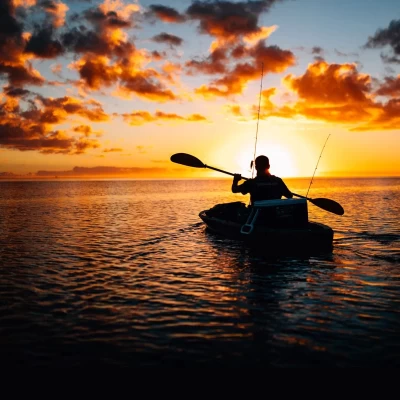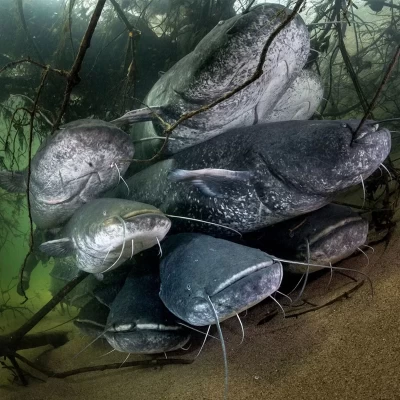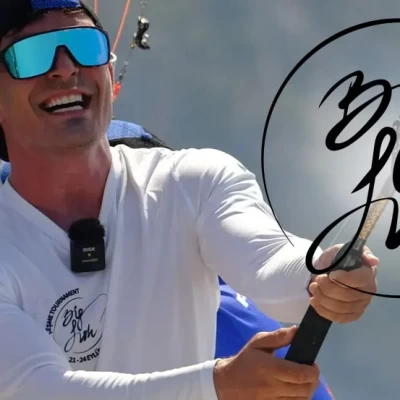Trying to decide between fluorocarbon and monofilament as the ideal leader material for your fishing adventures in Türkiye? Understanding the strengths and weaknesses of both will help you make an informed decision based on local fishing conditions.
Monofilament vs. Fluorocarbon: The Debate Among Anglers
From the shores of the Aegean and Mediterranean to the deep waters of the Black Sea, anglers in Türkiye often discuss the best gear for successful fishing. While rods, reels, and lures are always part of the conversation, leader material is a critical yet sometimes overlooked factor. The debate over monofilament versus fluorocarbon remains one of the most discussed topics among both local and visiting anglers.
To help you decide which leader material suits your needs best, we’ll break down their origins, strengths, and weaknesses. After reading this, you’ll have a clearer idea of which to use based on where and how you plan to fish in Türkiye.
Understanding Monofilament and Fluorocarbon Leaders
Monofilament: A Reliable Classic
Monofilament fishing lines have been widely used since the mid-20th century. Made from a single strand of nylon, this material quickly gained popularity due to its affordability, flexibility, and ease of use. Monofilament remains a preferred choice for many anglers, particularly those who value shock absorption and ease of knot tying.
Fluorocarbon: The Modern Alternative
Fluorocarbon, introduced later, offers key differences from monofilament. Made from a denser material, it is more resistant to abrasion, has minimal water absorption, and is known for its refractive properties, which some anglers believe make it less visible underwater. Its stiffness, durability, and resistance to UV light exposure have made it a popular leader material, particularly in challenging fishing environments.
Comparing Strengths and Weaknesses
Strength and Knot Integrity
- Monofilament is known for its superior knot strength and forgiving nature. It is easier to tie secure knots, making it a reliable choice for anglers who frequently adjust their rigs.
- Fluorocarbon, while generally stronger in tensile strength for a given diameter, is stiffer and requires extra care when tying knots to ensure they are secure.
Proper knot selection is essential for maximizing the effectiveness of both leader types. Knots such as the improved clinch, Palomar, and uni knot work well for monofilament, while fluorocarbon requires knots that prevent slippage, like the double uni or San Diego jam knot.
Stretch and Shock Absorption
- Monofilament has more elasticity, which acts as a natural shock absorber. This is beneficial when fighting strong fish, as it reduces the chance of breaking under sudden pressure.
- Fluorocarbon has little stretch, providing a more direct connection to the lure or bait, improving sensitivity. However, it is less forgiving under extreme tension.
Water Absorption and Durability
- Monofilament absorbs water over time, which can weaken it and cause it to degrade faster under UV exposure.
- Fluorocarbon resists water absorption, maintaining its strength and durability for longer periods, making it ideal for extended use in both saltwater and freshwater conditions.
Abrasion Resistance
- Fluorocarbon is denser and more resistant to abrasion, making it the preferred choice when fishing near rocks, piers, or underwater structures commonly found along Türkiye’s coasts and rivers.
- Monofilament is less abrasion-resistant but remains a viable choice in open-water environments where there is minimal risk of contact with rough surfaces.
Buoyancy and Sinking Rate
- Monofilament has a lower density, meaning it floats or suspends in the water, making it ideal for surface and shallow-water techniques.
- Fluorocarbon sinks faster, which is beneficial when fishing deeper waters or using sinking lures and bait.
Is Fluorocarbon Really Invisible Underwater?
Many anglers believe that fluorocarbon is nearly invisible underwater due to its refractive index being closer to that of water. While this may offer a slight advantage in clear waters, fish detect movement and shadows more than they focus on the line itself. In areas where fish are particularly cautious, using fluorocarbon may provide added confidence, but proper presentation and technique remain the most important factors.
Leader Length and Strength: Choosing the Right Setup for Turkish Waters
Selecting the appropriate leader length and strength is just as important as choosing the material. In Türkiye, where different environments demand different approaches, the right setup varies:
| Leader Length | Best Use |
|---|---|
| Short (30-50 cm) | Best for clear water and finesse techniques where minimal visibility is required. |
| Medium (50-100 cm) | Versatile for most applications, balancing visibility, strength, and ease of casting. |
| Long (100 cm+) | Useful when extra stealth or abrasion resistance is needed, such as fishing around reefs. |
The strength of the leader should be matched to the main fishing line and the expected size of the catch, ensuring optimal performance without unnecessary stiffness or weakness.
DIY vs. Pre-Tied Leaders: Which is Better?
Some anglers prefer pre-tied leaders for convenience, while others enjoy customizing their own setups. In Türkiye, where fishing conditions can change rapidly, DIY leaders allow for adjustments based on water clarity, depth, and fish behavior. However, pre-tied leaders save time and ensure consistent knot quality.
Common Mistakes When Using Fishing Leaders
Even experienced anglers sometimes make errors when choosing or using fishing leaders. By avoiding these mistakes, you can maximize your fishing success in Türkiye. Common mistakes include:
- Using an excessively thick leader, which reduces lure action and increases visibility.
- Selecting the wrong knot, leading to slippage or breakage.
- Mismatching leader length to fishing conditions.
- Reusing old leaders that have been weakened by previous catches or exposure.
Which Leader Material Should You Choose for Fishing in Türkiye?
The best leader material depends on your fishing conditions and target species in Türkiye’s diverse waters.
When to Choose Monofilament:
- Fishing in open water where abrasion resistance is not a primary concern.
- Using topwater lures or baits that require floating or neutral buoyancy.
- Seeking a budget-friendly, versatile option that is easy to handle.
When to Choose Fluorocarbon:
- Fishing near rocky seabeds, reefs, or underwater structures where abrasion resistance is essential.
- Using deeper diving lures or bottom fishing techniques.
- Targeting cautious fish in ultra-clear waters where a thinner, less visible leader may offer an advantage.
Final Thoughts
Both monofilament and fluorocarbon have their place in sport fishing in Türkiye. There is no one-size-fits-all answer, as the ideal choice depends on factors such as fishing locations, techniques, and personal preference. Understanding the strengths and weaknesses of each will allow you to make the best decision for your next fishing adventure along Türkiye’s beautiful coastline and inland waters.
Frequently Asked Questions
1. Is fluorocarbon always better than monofilament for fishing in Türkiye?
Not necessarily. Fluorocarbon is great for abrasion resistance and low visibility in clear waters, but monofilament remains a solid choice for its flexibility, shock absorption, and affordability. The best option depends on where and how you’re fishing.
2. How long should my fishing leader be in Türkiye’s waters?
Leader length depends on the fishing conditions. A short leader (30-50 cm) works well in clear water, while a medium leader (50-100 cm) balances stealth and strength. Longer leaders (100 cm+) are ideal for fishing around reefs or structures.
3. Does fluorocarbon really make a difference in clear waters?
Fluorocarbon’s refractive index is closer to that of water, making it less visible, which can help in ultra-clear conditions. However, fish rely more on movement and shadows, so proper presentation is always key.
4. Should I buy pre-tied leaders or make my own?
Pre-tied leaders offer convenience and consistent knot quality, while DIY leaders allow for customization based on conditions. Many experienced anglers in Türkiye prefer tying their own leaders to adapt to changing fishing situations.








